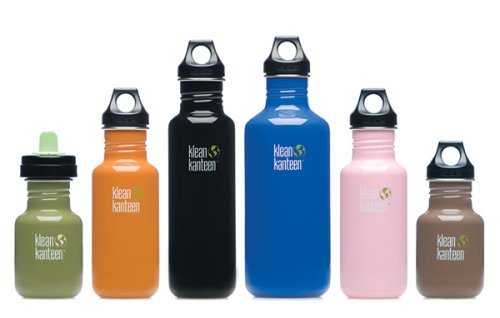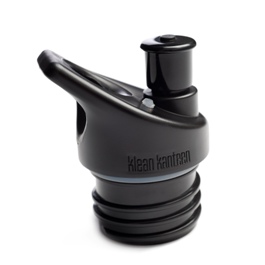What are BPAs & What are Safe Plastics?
There’s lots of talk about safe & unsafe plastics, how to recycle them, why or why not use them & so on. So, as my grandpa would say, what’s all this with these plastics?
Well, many of the plastics we use (water bottles, take out containers & so on) have a number on them that not only directs recycling but can help you avoid bisphenol A (or BPA), which is a chemical that’s been linked to breast cancer.
The plastic coding system can help you identify the safest options, which are typically opaque & not known to contain carcinogens or hormone-disrupting chemicals. These are the plastics that are numbered 2 HDPE, 4 LDPE & 5 PP.
What you want to avoid are number 7 plastics, which contain polycarbonate, the hard plastic that can potentially leach bisphenol A.
 One way to avoid BPA is to use a stainless steel water bottle (like the Klean Kanteens we carry at Green in BKLYN) instead of using plastic water bottles. That way you know BPAs are not leaching into the water you’re drinking.
One way to avoid BPA is to use a stainless steel water bottle (like the Klean Kanteens we carry at Green in BKLYN) instead of using plastic water bottles. That way you know BPAs are not leaching into the water you’re drinking.
Plus, it keeps plastic water bottles out of our landfills.
And, now we carry Klean Kanteen’s nifty new Sport Cap 2.0, which has a loop, dust cover & sport top. Very convenient, very klean & very cute (see?). 
The information below details plastics even further (with thanks & a nod to Natural Home Magazine for the info)…
Number 1 (PET, PETE or polyethylene terephthalate):
– Found in soft drink & water bottles, boil-in-bag & condiment containers
– Recycling = most curbside recycling programs
– Recycled into fleece & other fibers, tote bags, furniture, carpet, paneling
Number 2 (HDPE or high density polyethyylene):
– Found in milk jugs, personal care bottles, trash & shopping bags, butter & yogurt tubs, cereal box liners
– Recycling = most curbside recycling programs
– Recycled into detergent bottles, pens, floor tile, pipe, lumber, outdoor furniture, fencing
Number 3 (V, PVC or vinyl or polyvinyl chloride):
– Found in cleaning product bottles, cooking oil bottles, clear food packaging, medical equipment, siding, piping
– Recycling = rarely recycled but accepted by some plastic lumber makers
– Recycled into decks, paneling, mudflaps, gutters, flooring, cables, speed bumps, mats
Number 4 (LDPE or low density polyethylene):
– Found in grocery bags, dry cleaning bags, squeezable bottles, tote bags, clothing, furniture, carpet
– Recycling = not often recycled thru curbside programs; shopping bags can be recycled thru many stores
– Recycled into trash cans & liners, compost bins, shipping envelopes, lumber, landscaping & tile
Number 5 (PP or polypropylene):
– Found in syrup & ketchup bottles, yogurt containers, drink lids, caps & straws, medicine bottles
– Recycling = recycled thru some curbside programs & can be sent into places like Preserve (!) to be reused
– Recycled into streetlights, battery cables, brooms, rakes, auto battery cases, ice scrapers, landscape borders, bicycle racks &… Preserve toothbrushes, razors, bowls & cups (found at Green in BKLYN!)
Number 6 (PS or polystyrene):
– Found in disposable dishes, meat trays, egg cartons, carry out containers, medicine bottles, CD cases
– Recycling = recycled thru some curbside programs
– Recycled into insulation, light switch plates, egg cartons, rulers, foam packing, carry out containers
Number 7 (miscellaneous including polycarbonate):
– Found in “bullet-proof” materials, sunglasses, DVDs, iPod & computer cases, signs & displays, food containers, nylon
– Recycling = traditionally not recycled; some curbside programs now take them
– Recycled into plastic lumber, custom-made products


